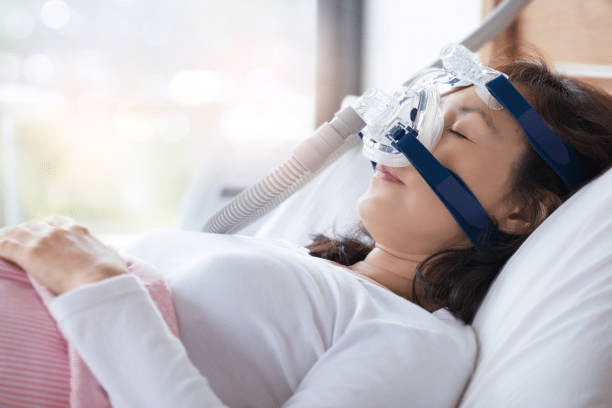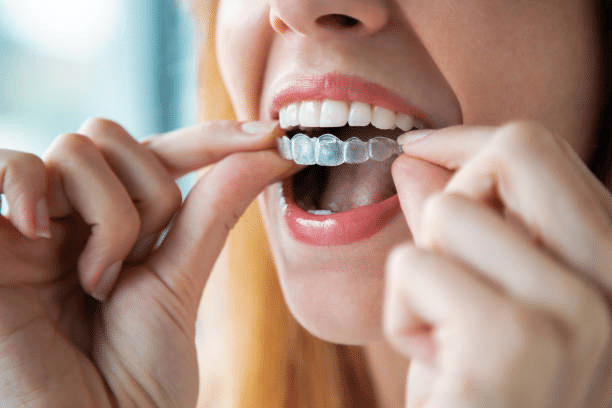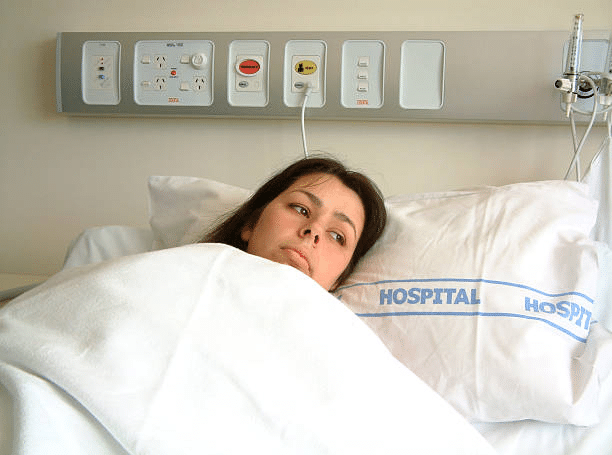Sleep is a fundamental aspect of our lives, crucial to our physical and mental well-being.
Unfortunately, for millions of individuals around the world, the quality of their sleep is disrupted by a condition known as sleep apnea. The impact of sleep apnea goes far beyond feeling tired during the day; it can contribute to serious health issues, including cardiovascular problems and cognitive impairment.
In the pursuit of revitalizing sleep and improving the overall quality of life, individuals with sleep apnea seek effective treatment options. While non-surgical interventions like Continuous Positive Airway Pressure (CPAP) therapy and oral appliances have been successful for many, sleep apnea surgery has emerged as a promising alternative for those seeking long-term relief.
By providing a comprehensive understanding of sleep apnea surgery, we aim to empower individuals with the knowledge to make informed decisions about their sleep health. From the preparation and surgical procedure to post-operative care and potential risks, we at CPAPwater will guide you through the intricacies of sleep apnea surgery.
Join us on this journey to discover how sleep apnea surgery can potentially revitalize your sleep and enhance your well-being. Read until the end to learn more.
Understanding Sleep Apnea

Sleep apnea is a sleep disorder characterized by recurrent episodes of disrupted breathing during sleep. These breathing interruptions can last for several seconds to minutes, often resulting in a temporary decrease in blood oxygen levels. There are three main types of sleep apnea:
- Obstructive Sleep Apnea (OSA): This is the most common form of sleep apnea, accounting for approximately 80-90% of cases. It occurs when the muscles in the back of the throat fail to keep the airway open, leading to partial or complete airflow blockage.
- Central Sleep Apnea (CSA): Unlike OSA, CSA is not caused by a physical obstruction but rather by a failure of the brain to transmit proper signals to the muscles that control breathing. This type of sleep apnea is less common and usually associated with underlying medical conditions or certain medications.
- Complex/Mixed Sleep Apnea: As the name suggests, complex or mixed sleep apnea combines obstructive and central sleep apnea. It often begins with central sleep apnea and later develops into obstructive sleep apnea.
Also Read: An Introduction Guide to Obstructive Sleep Apnea (OSA).
Common Symptoms And Risk Factors
Identifying the symptoms and risk factors associated with sleep apnea is crucial for timely diagnosis and treatment. Common symptoms of sleep apnea include:
- Loud and persistent snoring
- Episodes of breathing cessation during sleep often witnessed by a bed partner
- Excessive daytime sleepiness and fatigue
- Morning headaches
- Restless sleep or frequent awakenings
- Waking up with a choking or gasping sensation
- Difficulty concentrating and memory problems
Several factors can increase the risk of developing sleep apnea, including:
- Obesity and excess weight: The accumulation of fatty tissue around the neck can narrow the airway and contribute to sleep apnea.
- Age: Sleep apnea can affect individuals of all ages, but the risk increases with age, particularly over 40.
- Gender: Men are more likely to develop sleep apnea compared to women, although the risk in women increases after menopause.
- Family history: Having family members with sleep apnea can increase the likelihood of developing the condition.
- Smoking and alcohol use: These habits can contribute to airway inflammation and relaxation of the throat muscles, leading to increased susceptibility to sleep apnea.
Diagnosis And Assessment Methods
Accurate diagnosis of sleep apnea is essential for effective treatment. If sleep apnea is suspected, a healthcare professional specializing in sleep medicine will conduct a comprehensive evaluation. The diagnostic process typically involves the following:
- Sleep study (polysomnography): This overnight test records various physiological parameters during sleep, including brain waves, heart rate, eye movements, muscle activity, and airflow. It helps to identify the presence and severity of sleep apnea and differentiate between obstructive and central sleep apnea.
- Home sleep apnea testing: Sometimes, a simplified sleep study can be conducted at home using portable devices. These devices usually monitor breathing patterns, blood oxygen levels, and heart rate.
- Physical examination and medical history review: The healthcare provider will perform a physical exam to evaluate anatomical factors that may contribute to sleep apnea. They will also review the patient’s medical history and inquire about symptoms, risk factors, and overall health.
Non-Surgical Treatments for Sleep Apnea
While surgery for sleep apnea is a potential solution for treating sleep apnea, several non-surgical treatments can effectively manage the condition. These treatments aim to alleviate the symptoms and improve the quality of sleep. Let’s explore some of the commonly used non-surgical interventions:
1. Continuous Positive Airway Pressure (CPAP) Therapy

CPAP therapy is the gold standard for moderate to severe obstructive sleep apnea. It involves wearing a mask over the nose or mouth during sleep, connected to a machine that delivers a continuous stream of pressurized air. The air pressure helps keep the airway open, preventing breathing cessation and snoring episodes.
2. Oral Appliances And Dental Devices
Oral appliances and dental devices are other non-surgical options for managing sleep apnea, particularly for individuals with mild to moderate cases or those who cannot tolerate CPAP therapy. These devices are custom-made and work by repositioning the jaw or tongue to maintain an open airway during sleep. They are typically fitted by dentists with expertise in sleep medicine.
3. Lifestyle Modifications And Positional Therapy
In addition to medical interventions, certain lifestyle modifications can contribute to better sleep and reduce the severity of sleep apnea. These include:
- Weight loss: Shedding excess weight can significantly improve sleep apnea symptoms, as obesity is a common risk factor. Even a modest weight reduction can make a difference.
- Regular exercise: Regular physical activity promotes overall health and can help strengthen the muscles involved in breathing and improve sleep quality.
- Sleep position adjustments: Sleep apnea is more pronounced when sleeping on the back for some individuals. Training oneself to sleep on the side can help alleviate symptoms. Special pillows or positional therapy devices can also aid in maintaining a lateral sleeping position.
4. Weight Management And Its Impact On Sleep Apnea
Weight management plays a crucial role in managing and to treat sleep apnea, especially for individuals who are overweight or obese. Excess weight can contribute to the narrowing of the airway, making it more susceptible to collapse during sleep.
By adopting a healthy diet, engaging in regular physical activity, and seeking guidance from healthcare professionals or nutritionists, individuals can achieve a healthy weight and potentially reduce the severity of their sleep apnea.
It is important to note that the effectiveness of non-surgical treatments can vary depending on the individual and the severity of their sleep apnea.
The Role of Sleep Apnea Surgery

Sleep apnea surgery is a viable treatment option for individuals who have not found sufficient relief with non-surgical interventions or prefer a more permanent solution.
Sleep apnea surgery aims to address the underlying anatomical or structural factors that contribute to airway obstruction during sleep. By surgically modifying the airway these procedures can help to improve breathing, reduce sleep apnea episodes, and alleviate symptoms.
Types of Sleep Apnea Surgeries
1. Uvulopalatopharyngoplasty (UPPP)
UPPP is one of the most common surgical procedures for obstructive sleep apnea. It involves the removal of excess tissue from the throat, including the uvula, tonsils, and parts of the soft palate. This procedure aims to widen the airway and reduce obstruction.
2. Maxillomandibular Advancement (MMA)
MMA is a more complex surgical option that involves repositioning the upper and lower jaws to increase the airway size. By advancing the jaws forward, the space at the back of the throat is enlarged, reducing the risk of airway collapse during sleep.
3. Septoplasty And Turbinate Reduction
Septoplasty is a surgical procedure performed to correct a deviated septum, which can contribute to nasal obstruction and sleep apnea. Turbinate reduction involves reducing the size of nasal turbinates, which are bony structures inside the nose that can obstruct airflow.
4. Tracheostomy And Hypoglossal Nerve Stimulation
Tracheostomy is a rare and invasive procedure that involves creating an opening in the neck to bypass the upper airway obstruction. It is typically reserved for severe cases of sleep apnea when other treatment options have failed. Hypoglossal nerve stimulation is a newer approach that involves implanting a device that stimulates the hypoglossal nerve, which controls the movement of the tongue and helps to keep the airway open during sleep.
5. Other Surgical Procedures
Additional surgical procedures may be considered depending on the individual’s specific needs and anatomical factors. These may include lingual tonsillectomy, genioglossus advancement, or palatal implants.
Benefits And Considerations Of Sleep Apnea Surgery

Sleep apnea surgery offers several potential benefits, including:
- Improved breathing and reduction in sleep apnea episodes
- Reduction in snoring and improvement in sleep quality
- Decreased reliance on continuous positive airway pressure (CPAP) therapy or oral appliances
- Potential improvement in daytime symptoms such as excessive sleepiness and cognitive function
However, it is vital to consider certain factors before opting for sleep apnea surgery:
- Success rates and effectiveness vary depending on the type of surgery and individual factors.
- Surgery carries inherent risks and potential complications, including bleeding, infection, and adverse reactions to anesthesia.
- Some surgical procedures may require a significant recovery period and lifestyle adjustments.
- Follow-up care and regular monitoring are necessary to evaluate the long-term effectiveness and make necessary adjustments.
Before proceeding with sleep apnea surgery, a thorough evaluation and discussion with healthcare professionals are essential. The decision to undergo sleep apnea surgery should be based on a comprehensive assessment of the individual’s condition, medical history, and personal preferences.
Additionally, having realistic expectations about the outcomes of sleep apnea surgery is essential. While these procedures can be highly effective for some individuals, they may not completely eliminate sleep apnea in all cases. It is necessary to understand that surgery is just one aspect of comprehensive treatment, and post-operative management, including lifestyle modifications and regular follow-up, plays a crucial role in achieving long-term success.
The decision to undergo sleep apnea surgery should be well-informed, weighing the potential benefits, risks, and individual circumstances. Consulting with a sleep specialist and a qualified surgeon can provide valuable insights and help determine the most suitable treatment approach for each individual.
The Surgical Procedure
Sleep apnea surgeries are typically performed under general anesthesia, ensuring the patient remains unconscious and pain-free throughout the procedure. Local anesthesia or a combination of local and general anesthesia may be used in some cases. The choice of anesthesia will depend on the specific surgery, the patient’s medical history, and the surgeon’s recommendation.
The surgical techniques used in sleep apnea surgeries can vary based on the procedure. Surgeons may employ various approaches, including traditional open surgery or minimally invasive techniques. Minimally invasive techniques, such as endoscopic or robotic-assisted surgery, offer the advantage of smaller incisions, reduced scarring, and potentially shorter recovery times.
Step-By-Step Explanation Of A Typical Sleep Apnea Surgery
While the exact steps of a sleep apnea surgery will vary depending on the specific procedure, here is a general outline of the process:
- Step #1: Preoperative Preparation: The patient will be evaluated and prepared for surgery, including reviewing medical history, performing necessary tests, and ensuring appropriate fasting.
- Step #2: Anesthesia Administration: Anesthesia will be administered to induce unconsciousness and pain relief.
- Step #3: Incisions and Access: The surgeon will make incisions in the appropriate locations based on the surgical technique. Depending on the procedure being performed, this may involve incisions in the throat, mouth, or nose.
- Step #4: Tissue Modification or Removal: The surgeon will carefully modify or remove specific tissues contributing to airway obstruction. This may involve removing excess tissue, repositioning anatomical structures, or utilizing implants or devices to support airway stability.
- Step #5: Closure and Recovery: The surgeon will close the incisions using sutures or other techniques once the necessary modifications have been made. The patient will be closely monitored in the recovery area to ensure a smooth transition from anesthesia.
Potential Variations And Modifications Based On Individual Cases
It is important to note that the surgical procedure for sleep apnea can vary significantly based on the individual case and the patient’s specific needs. The surgeon will tailor the surgical approach to address the unique anatomical factors contributing to sleep apnea. This may involve combining multiple surgical techniques or adapting the procedure to accommodate pre-existing conditions or previous surgeries.
After a thorough evaluation, the surgeon will determine the most appropriate surgical plan, considering factors such as the severity of sleep apnea, anatomical considerations, and the patient’s overall health. Clear communication between the patient and the surgical team is crucial to ensure a comprehensive understanding of the surgical plan and to address any concerns or questions.
Recovery and Post-Surgical Care

After undergoing sleep apnea surgery, proper recovery and post-surgical care are essential to ensure optimal healing and long-term success.
1. Hospital Stay And Monitoring
The length of the hospital stay following sleep apnea surgery can vary depending on the specific procedure performed and the individual’s overall health. Some surgeries may require an overnight stay, while others may be outpatient. During the hospital stay, the patient will be closely monitored for potential complications or adverse reactions to anesthesia.
2. Pain Management And Discomfort After Surgery
It is normal to experience some pain, discomfort, and swelling following sleep apnea surgery. The surgeon will prescribe appropriate pain medications to manage postoperative pain. It is essential to follow the prescribed dosage and instructions for pain management. As the surgeon recommends, applying ice packs and over-the-counter pain relievers may also help alleviate discomfort and reduce swelling.
3. Follow-Up Appointments And Post-Operative Instructions
After sleep apnea surgery, the patient will need to attend follow-up appointments as scheduled by the surgeon. These appointments allow the surgical team to monitor the healing process, evaluate the surgical outcomes, and address any concerns or complications that may arise. The surgeon will provide specific post-operative instructions, such as wound care, oral hygiene, and any necessary medication or dietary restrictions.
4. Dietary Recommendations And Activity Restrictions
The surgeon may provide dietary recommendations to promote healing and reduce the risk of complications. This may include consuming soft foods, avoiding spicy or acidic foods irritating the surgical site, and staying hydrated. Additionally, there may be activity restrictions, such as avoiding strenuous exercise, heavy lifting, or activities that could strain the surgical area.
It is crucial to follow these instructions to ensure proper healing and minimize the risk of complications.
During the recovery period, it is vital to maintain open communication with the surgical team. If any unexpected symptoms, such as excessive bleeding, severe pain, or signs of infection, arise, it is vital to contact the surgeon immediately for guidance and appropriate medical intervention.
Takeaway
Sleep apnea surgery offers various procedures like UPPP, MMA, and septoplasty to widen the airway and improve breathing during sleep, showing promising results in alleviating symptoms and enhancing sleep quality. However, it should not be viewed as a solitary solution. Effective sleep apnea management typically requires a multifaceted approach, including non-surgical therapies, lifestyle changes, and ongoing monitoring for sustained success.
Considering surgery for sleep apnea? Enhance your recovery and long-term care with our selection of CPAP accessories. Begin your journey to better sleep and health today.



